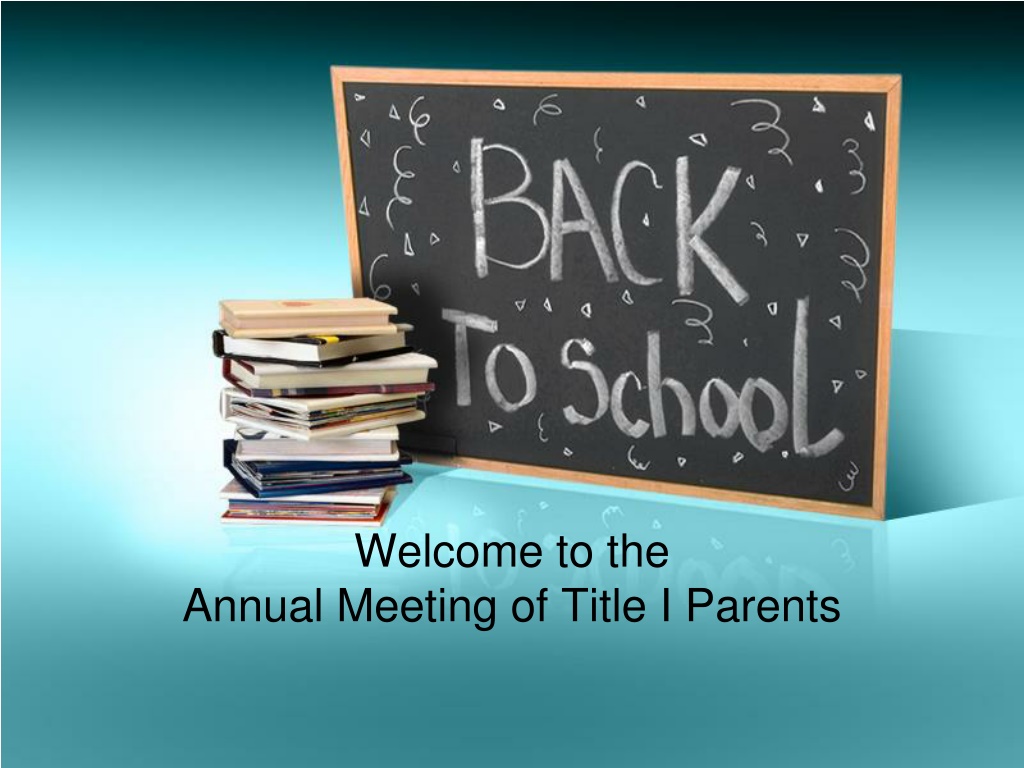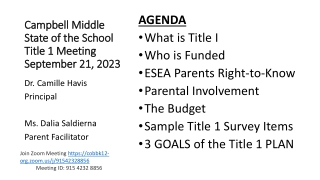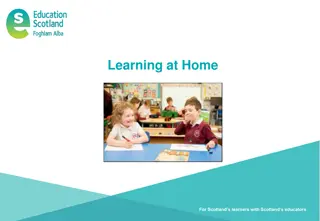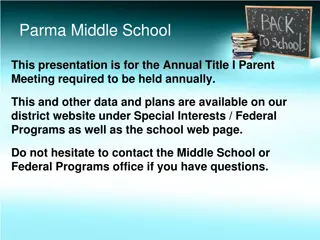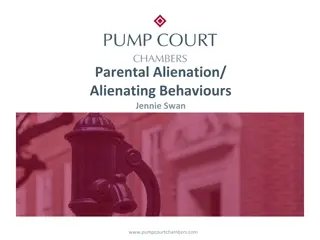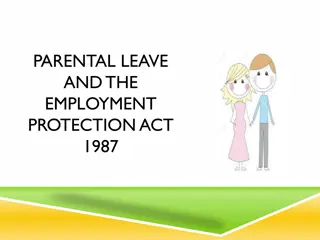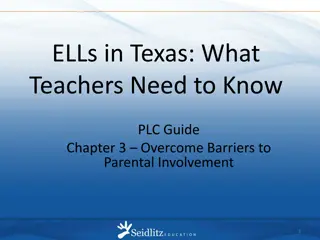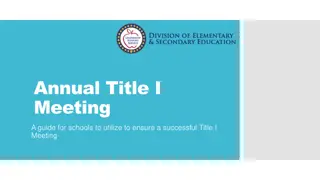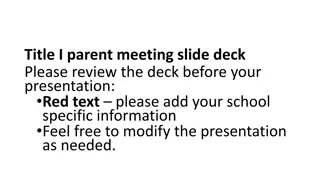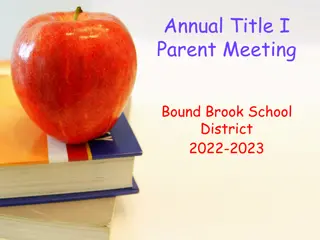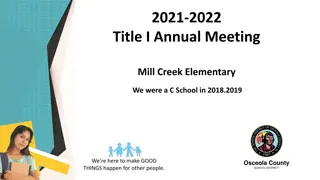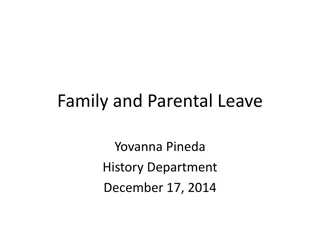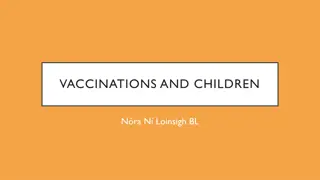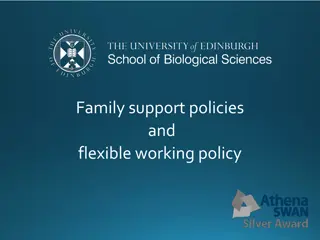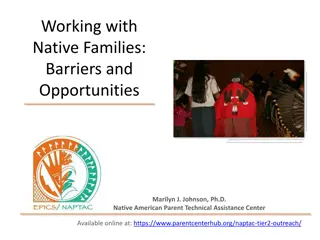Understanding Title I: Parental Involvement in Education
This content outlines the importance of Title I parental involvement in education, including the purpose of annual meetings, what being a Title I school entails, the 1% set-aside for parent and family engagement, the LEA Consolidated Plan, and ways parents can be engaged in their child's education under ESSA.
Download Presentation

Please find below an Image/Link to download the presentation.
The content on the website is provided AS IS for your information and personal use only. It may not be sold, licensed, or shared on other websites without obtaining consent from the author. Download presentation by click this link. If you encounter any issues during the download, it is possible that the publisher has removed the file from their server.
E N D
Presentation Transcript
Welcome to the Annual Meeting of Title I Parents
Why are we here? The Every Student Succeeds ACT of 2015 requires that each Title I School hold an Annual Meeting of Title I parents for the purpose of Informing you of your school s participation in Title I Explaining the requirements of Title I Explaining your rights as parents to be involved
What you will learn What does it mean to be a Title I school? What is the1% Set-Aside for parent and family engagement? What is the LEA Title I Consolidated Plan? What is the LEA Parental and Family Engagement Policy? What is a CIP? What is the School-Parent Compact? How do I request the qualifications of my child s teacher(s)?
What you will learn (Continued) How is the Annual Evaluation of the Parent and Family Engagement policy conducted? Evaluations need to target 3 key components 1. Barriers 2. Ability to assist learning 3. Successful interactions How can I be involved in all of these things I m learning about?
What does it mean to be a Title I School? Being a Title I school means receiving federal funding (Title I dollars) to supplement the school s existing programs. These dollars are used for Identifying students experiencing academic difficulties and providing timely assistance to help these student s meet the State s challenging content standards. Purchasing supplemental staff/programs/materials/supplies Conducting parent and family engagement meetings/trainings/activities Being a Title I school also means parent and family involvement and knowing their rights under ESSA.
What is the 1% set-aside and how are parents involved? Any LEA with a Title I Allocation exceeding $500,000 is required by law to set aside 1% of it s Title I allocation for parent and family engagement. Of that 1%, 10% may be reserved at the LEA for system-wide initiatives related to parent and family engagement. The remaining 90% must be allocated to all Title I schools in the LEA. Therefore each Title I school receives its portion of the 90% to implement school-level parent and family engagement with clear expectations and objectives for meaningful involvement. You, as Title I parents, have the right to be involved in how this money is spent.
What is the LEA Consolidated Plan? The LEA Title I Consolidated Plan addresses how the LEA will use Title I funds throughout the school system . Topics include: Student academic assessments Additional assistance provided struggling students Coordination and integration of federal funds and programs School programs including Migrant, Pre-School, EL, and Homeless, as applicable. Parent and Family Engagement Strategies, which is included in the Parent and Family Engagement Policy. You, as a Title I Parent, have a right to be involved in the development of the LEA Title I Consolidated Plan
What is the LEA Parent and Family Engagement Plan? This plan addresses how the LEA will implement the parent and family engagement requirements of Every Student Succeeds Act. It includes The LEA s expectations for parents and families How the LEA will involve parents in decision-making How the LEA will work to build the schools and parents capacity for strong parental involvement to improve student academic achievement You, as Title I parents, have the right to be involved in the development of this plan.
What is a CIP? The CIP is your school s Continuous Improvement Plan and includes: A Needs Assessment and Summary of Data Goals and Strategies to Address Academic Needs of Students Professional Development Needs Coordination of Resources/Comprehensive Budget The School s Parent and Family Engagement policy. You, as Title I parents, have the right to be involved in the development of this plan.
Whats included in the schools Parent and Family Engagement Plan This plan addresses how the school will implement the parent and family engagement requirements of Every Child Succeeds Act of 2015. Components include How parents can be involved in decision-making and activities How parental and family engagement funds are being used How information and training will be provided to parents How the school will build capacity in parents and staff for strong parental and family engagement through evidence based strategies You, as Title I parents, have the right to be involved in the development of your school s Parent and Family Engagement Plan.
What is the School-Parent Compact? The compact is a commitment from the school, the parent, and the student to share in the responsibility for improved academic achievement. You, as Title I Parents, have the right to be involved in the development of the School-Parent Compact. School section MUST include the following 6 components Distribution of the Compact.
How do I request the qualifications of my child s teachers? You, as Title I Parents, have the right to request the qualifications of your child s teachers How you are notified of this right and the process for making such request.
How is the evaluation of the LEA Parent and Family Engagement Policy Conducted? Evaluation Requirements LEAs and schools must actively outreach to all parents and families reaching beyond barriers of culture, language, disabilities, and poverty. Conduct annually Conduct with Title I parents Analyze Content and Effectiveness of the current plan Identify Barriers to parental and family engagement Data/Input may include Parent Survey (Required) Focus Groups Parent Advisory Committees Process and Timeline How the evaluation informs next year s plan
Who are the parent leaders at my school? Name Phone e-mail address Contact 1 Contact 2 Contact 3 Contact 4
